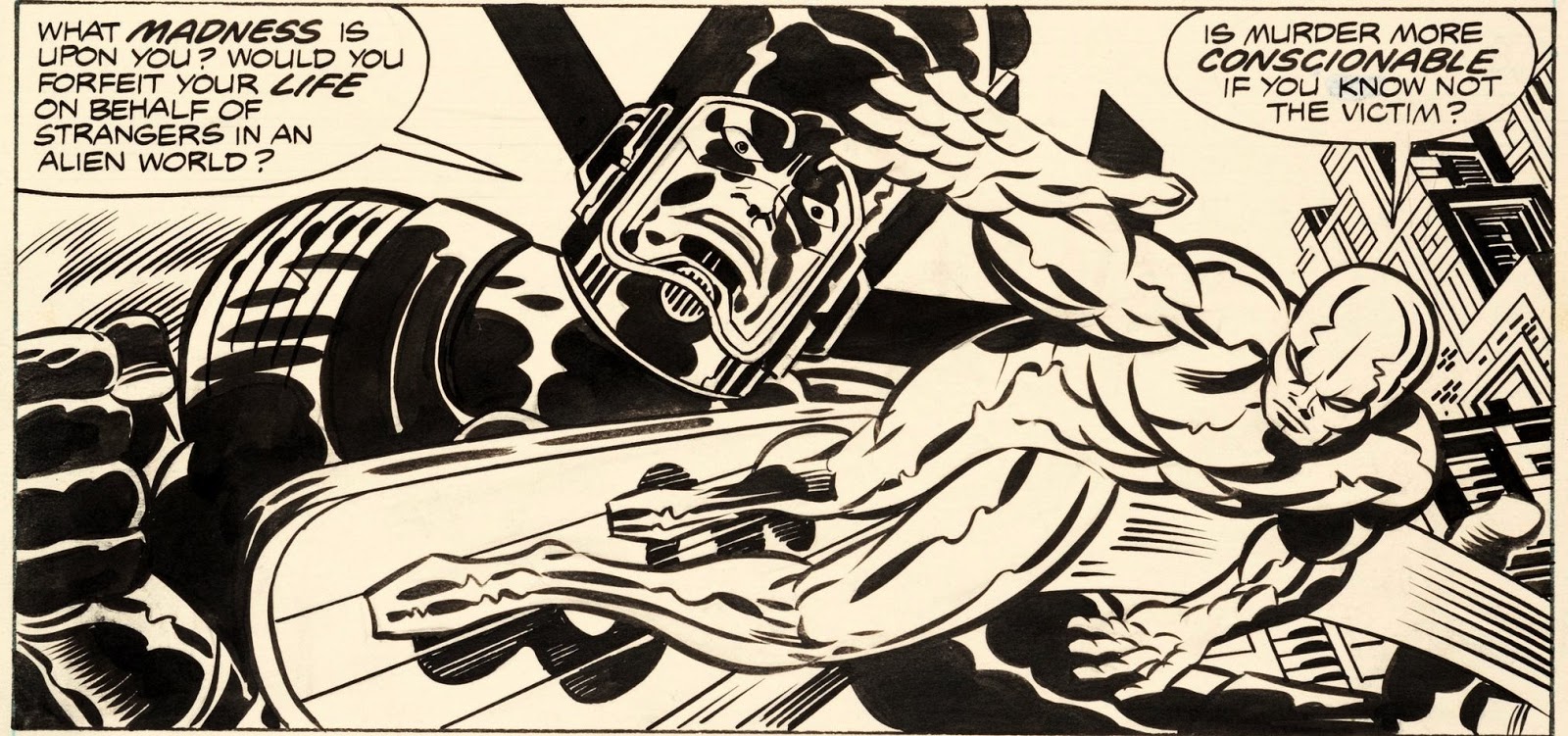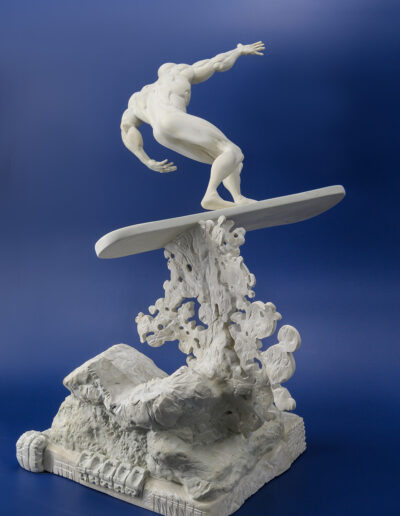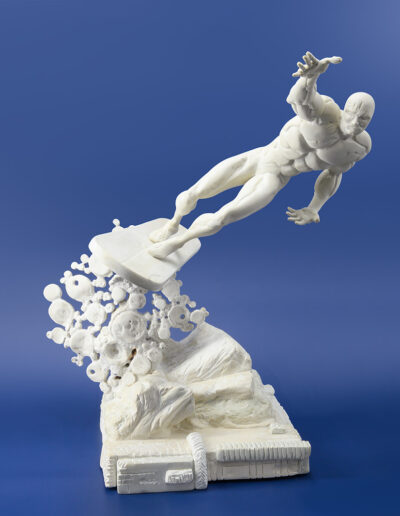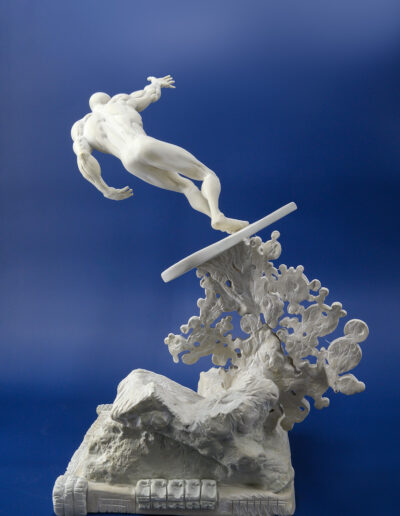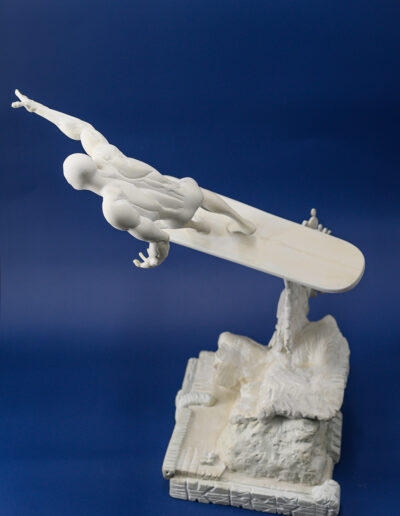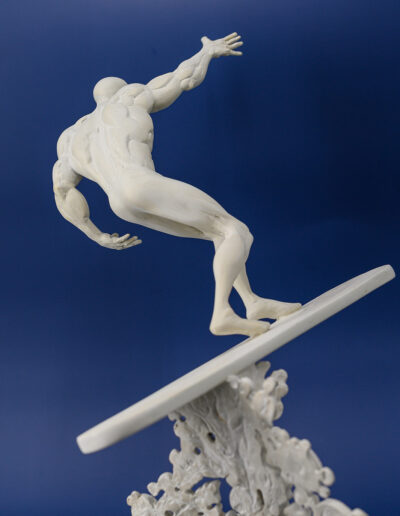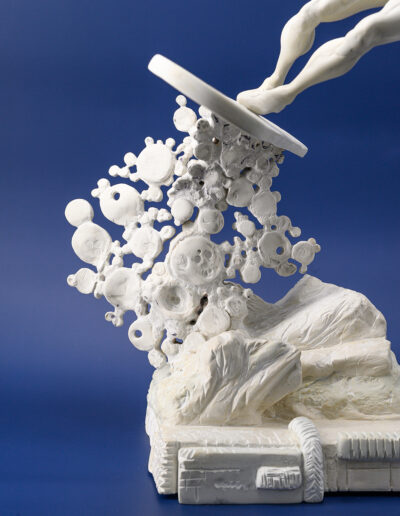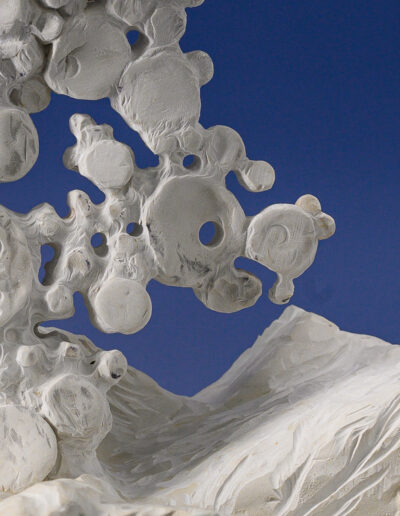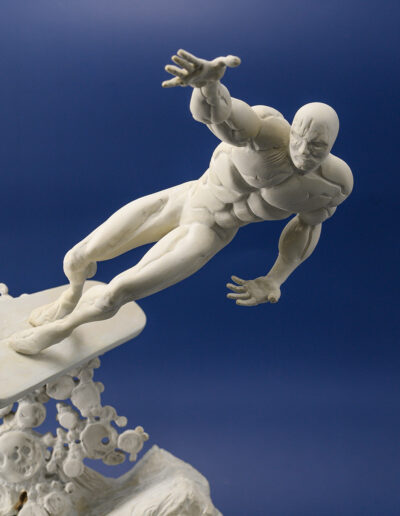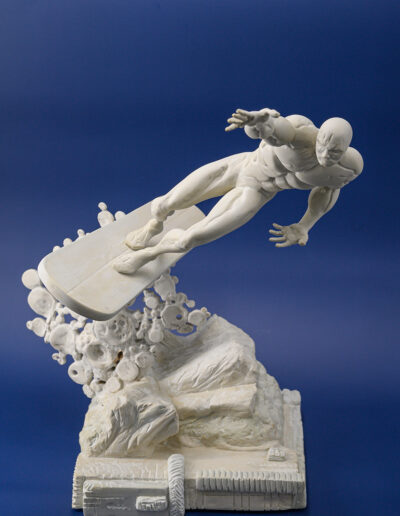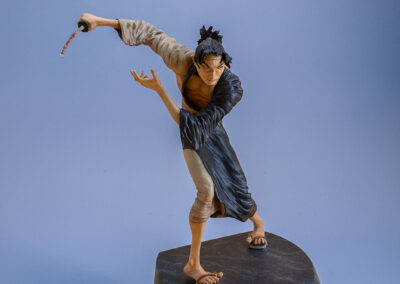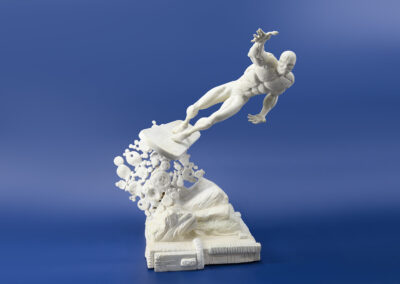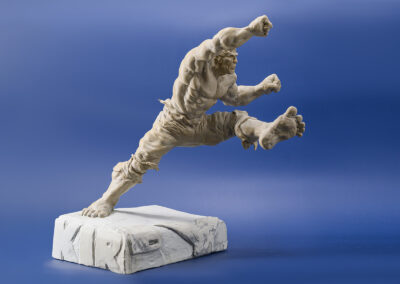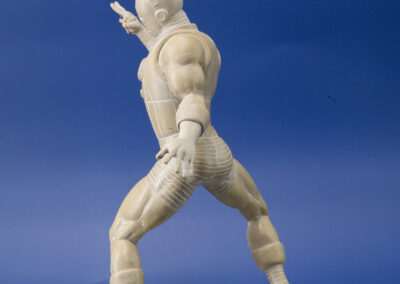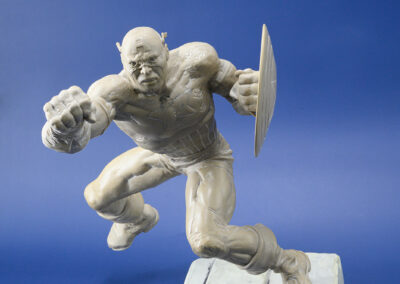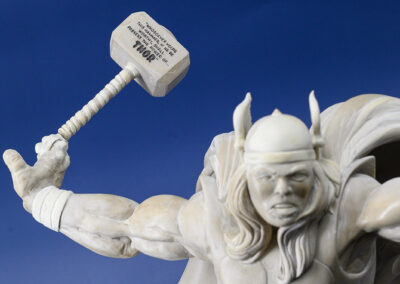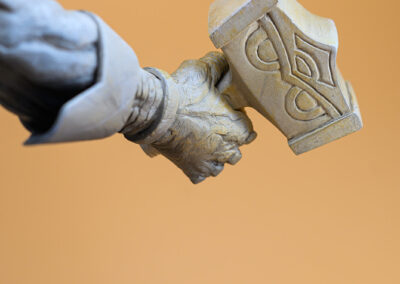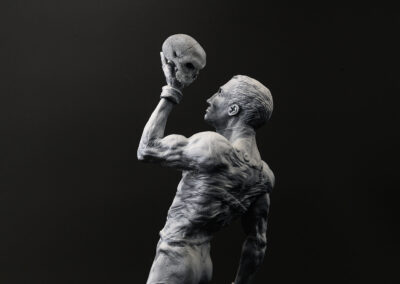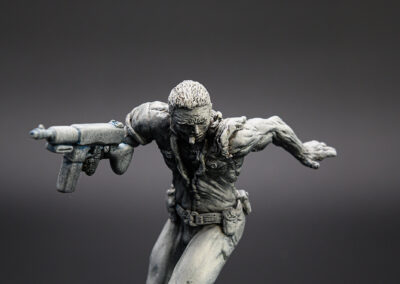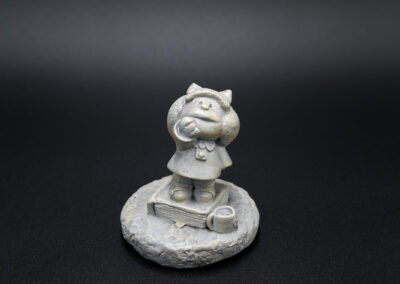Kirby
Silver
Surfer
Behind the Scenes
Jack Kirby was, is and will always be, comics for me. His artwork and stories have had a profound impact on my life, and I never tire of reading and collecting them, or preaching about the man and his work. Frankly, he was wronged. And whenever I’ve endeavored to make a piece based on his drawings, I feel the weight and the joy of his legacy and the connection we, his fans, feel to it.
That said, it’s tough to translate the man’s work into sculptures. Really tough. Like when you want to sculpt Kirby Krackle.
His figures are incredibly dynamic, capturing amazing, exaggerated poses with the fewest possible marks. The style is instantly recognizable, and it seems so simple… until you try and copy it. The goal is to be as faithful as possible in interpreting every line, every gesture, every grace note—no matter how abstract—preserving not just the essence, but the actual work. I don’t want the sculptures to be Kirby through a “filter.” I want it to be as close to pure KIRBY as possible.
It isn’t easy. But the King is worth it.
The Silver Surfer: The Ultimate Cosmic Experience
Published by Fireside Books in 1978, The Silver Surfer: The Ultimate Cosmic Experience was the last collaboration between Jack Kirby and Stan Lee, and it was not a happy one. The roots of that conflict stretched back many years, throughout the creation and establishment of the Marvel Comics universe.
The Silver Surfer was originally created solely by Kirby, and he felt—justifiably—that Lee had appropriated the Surfer. The situation only deteriorated further when Lee decided to give the Surfer his own monthly series in ’68—only to hand the penciling assignment to John Buscema. As if that weren’t enough, Lee chose to give the character a different origin than the one Kirby had originally imagined.
Kirby quit Marvel two years later to work for rival publisher DC, where he created a host of memorable characters and stories including all the Fourth World concepts like Darkseid and the various New Gods, as well as The Demon, Etrigan, OMAC, the one-man army corps and Kamandi, the last boy on earth.
Kirby’s return to Marvel was touted as the return of the “King,” his rightful title as arguably the most prolific and influential creator in the medium of western comics. Though the work he generated in that period is now regarded as masterful, both in graphic artistry—dynamic storytelling and boldness of style, which was increasingly abstract—as well as its heady incorporation of wildly diverse themes, readers didn’t truly embrace it at the time. The Silver Surfer graphic novel is a great example of the evolution of Kirby’s line. Freed of all constraints of gravity or concerns over portraying “normal” human anatomy, the King goes off—giving us a Surfer who is simultaneously recognizable and yet otherworldly, equal parts power incarnate and ethereal.
View Collection
Let’s make something amazing together
 Please note, all Manifest Sculpt work is completed with traditional sculpting techniques—modelling and carving—rather than through modern digital techniques and programs. Consequently, the resin and bronze castings in this edition were also produced through traditional mold making and manufacturing processes. Final Manifest Sculpt commissions are available in a variety of materials, but they are not 3D printed and are not available as printable files. Copyright Notice: all work, including ideation, concepts, stories and their development, character design and production are the property of Carlos Soca unless otherwise noted, and all rights are reserved. Should you wish to discuss collaboration or licensing of an intellectual property or its design, please contact Manifest Sculpt.
Please note, all Manifest Sculpt work is completed with traditional sculpting techniques—modelling and carving—rather than through modern digital techniques and programs. Consequently, the resin and bronze castings in this edition were also produced through traditional mold making and manufacturing processes. Final Manifest Sculpt commissions are available in a variety of materials, but they are not 3D printed and are not available as printable files. Copyright Notice: all work, including ideation, concepts, stories and their development, character design and production are the property of Carlos Soca unless otherwise noted, and all rights are reserved. Should you wish to discuss collaboration or licensing of an intellectual property or its design, please contact Manifest Sculpt.

